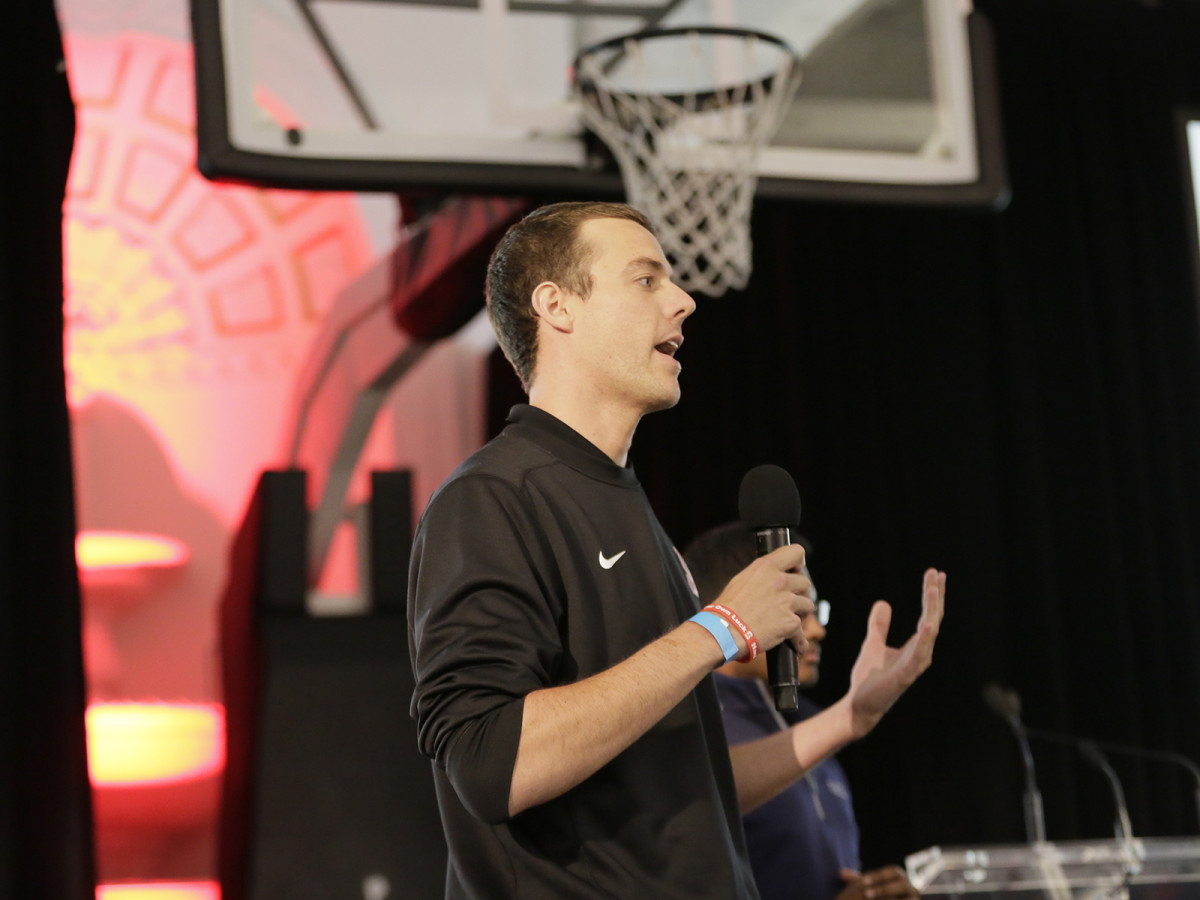NBA Hackathon: Basketball's Math Movement Fosters All-Night Marathon

You could say I once dabbled in math. I notched a perfect score on the AP Calculus BC exam during my senior year of high school, although that’s almost certainly more of a reflection of my teacher’s prowess than my own abilities. Whatever limited numerical knowledge that remains in my brain today has helped navigate the moneyball era in basketball. But like your loudest armchair and trade machine general managers, my mathematical aptitude clearly pales in comparison to that of the brilliant men and women who comprise the team analytics departments across the NBA… and the talented college students vying to join them.
What Happened to Superman? How Dwight Howard Lost His Way and Is Trying to Get It Back
Over 900 aspiring number crunchers applied to this year’s NBA Hackathon, presented by Verizon, which will take place this weekend at Skylight Modern in New York. After last fall’s inaugural event ran swimmingly, the league expanded to a more traditional overnight format this year, including both a basketball and business track. Hackathons typically present computer programmers and other technical whizzes with collaborative projects they must complete by function’s end. Picture a slumber party with code and algorithms replacing junk food and ghost stories, combined with the time-sensitive pressure of Cupcake Wars.
The NBA’s version spawned from the league office’s own analytics department. Staffers kick around theoretical questions just like buddies at a bar. At what distance behind the three-point line does a triple actually become less valuable than a two-pointer? How can you truly measure a player’s pick-and-roll IQ? So, why not gauge those discussions with the NBA’s most intelligent observers? “The idea of leveraging that fan base, and also giving them an opportunity and a platform to display their work in front of teams and league office personnel, there was a lot of untapped potential out there,” says Jason Rosenfeld, the NBA’s director of basketball analytics.
That’s the key: 20 teams are sending a total of 39 representatives to this year’s competition, essentially morphing a brainteaser into the NBA Draft Combine for statisticians, engineers and developers. Only 207 applicants were accepted. “We vet these competitors pretty darn carefully,” Rosenfeld says—therefore only introducing the most talented crop of students to the league’s front office personnel. To gain entrance into the event’s basketball track, applicants needed to calculate the probability the 2016-17 Warriors could have, with the addition of Kevin Durant, avoided losing consecutive games for an entire season. I tried. It’s relatively easy to compute an NBA team’s projected win total through each player’s adjusted plus-minus and estimated playing time. But I failed miserably trying to pin down the essential back-to-back loss element within the 82 game sample. The second, bonus question asked applicants to determine when teams are eliminated from playoff contention.

Chris Pickard will scour the weekend’s proceedings for the next bright mind that can help advance the Sacramento Kings’ strategy and analytics department. “It’s amazing to be on the other side of the coin,” Pickard says. Only a year ago he was amongst the bustling competitors racing to create the best defensive metric possible in just a matter of hours. Months shy of the final year of his computer engineering masters program at Stanford, Pickard blasted the email group of staff writers for Nylon Calculus—the popular NBA advanced analytics site hosted on FanSided—in search of a fellow student interested in partnering for the competition. Senthil Natarajan, an electrical engineering student at Rice University, responded, and the duo met for the first time in New York a few weeks later, brainstorming how to compute a revolutionary formula for defensive analysis.
Pickard and Natarajan ultimately crafted a method to measure defensive versatility. Through the exclusive data the NBA provided, they were able to determine which player was matched against which specific opposing player on any given possession. From there, Pickard and Natarajan divvied those opposing offensive players into archetypes—three-point specialists, stretch 5s, etc.—and evaluated how those individual shooters fared against the defender in question, in comparison to the expected value of that player’s shot. The defender’s success against the various types of scorers revealed his malleability on the defensive end.
The partners finished second in the competition. And while they weren’t crunching numbers, Pickard and Natarajan schmoozed with the team executives in attendance. Pickard seamlessly blended in. “There’s a certain ease with people that he has that I think serves him pretty well,” says Seth Partnow, the Bucks’ director of basketball research who also began as a Nylon Calculus writer. Partnow helped introduce Pickard to Jud Winton, the Clippers’ VP of Research and Analytics. And by a fortuitous stroke of luck, Pickard had a trip planned to Los Angeles for the following weekend. By the time he visited Winton at the Clippers’ practice facility, L.A. was ready to offer an internship. “The fact that he had public work available and he had work he could send us as well, was just evidence of his capabilities,” Winton says.
Nikola Jokic and the Nuggets' Impossible Task Out West
Pickard collaborated with the Clippers in between his final semesters of classes, flying down to Los Angeles whenever he could. The season of work built an impressive resume that served Pickard well when the Kings created their new department, spearheaded by Luke Bornn, ultimately delivering Pickard a dream job. League executives believe Pickard’s whirlwind journey, stemming from the Hackathon, will become a common path into the NBA. “It’s a great resource for teams to find ‘the next Chris,’” Bornn says. “Someone who can help take our team to the next level.” In a sphere where results are often binary, the NBA Hackathon is starting to present endless opportunity.
